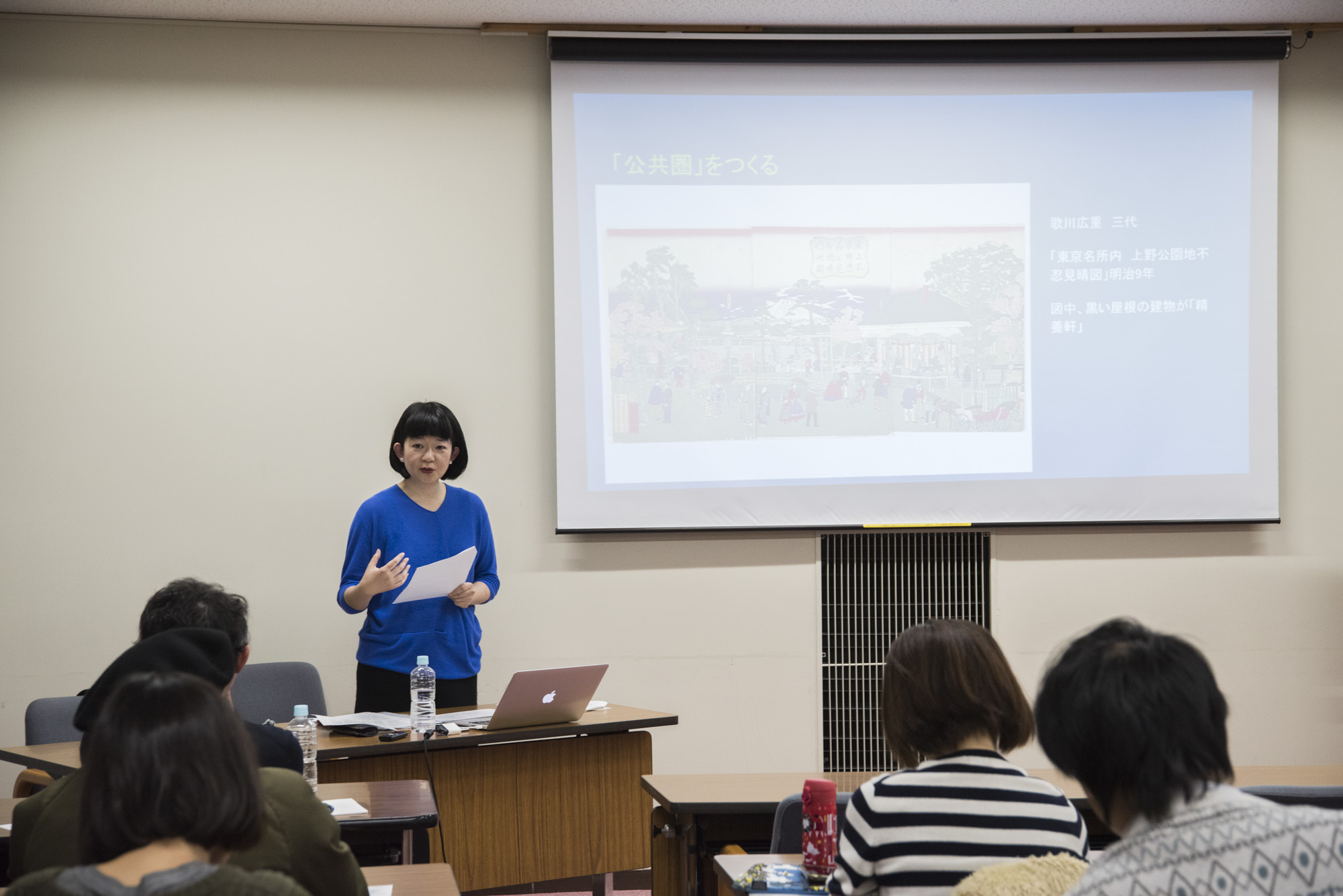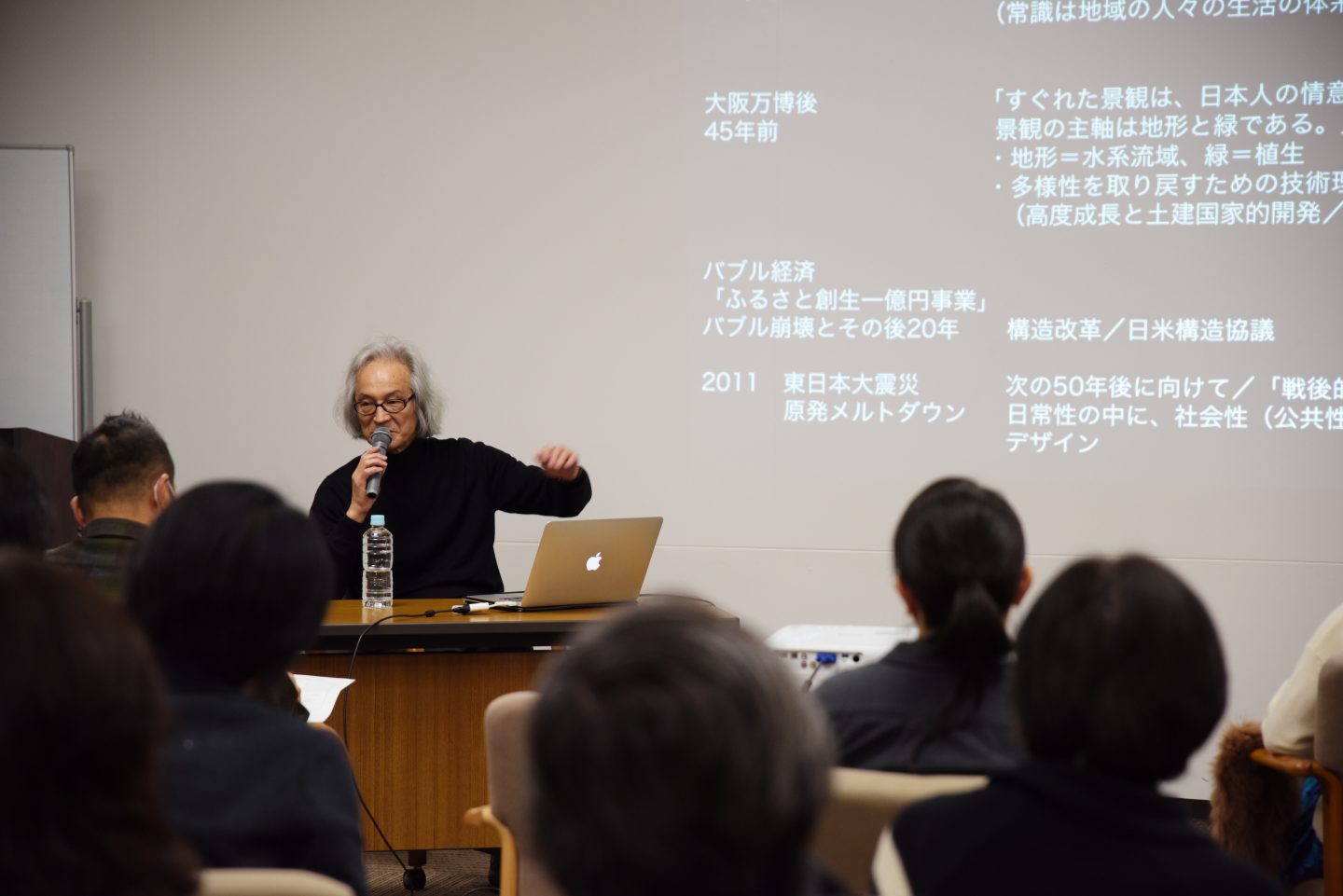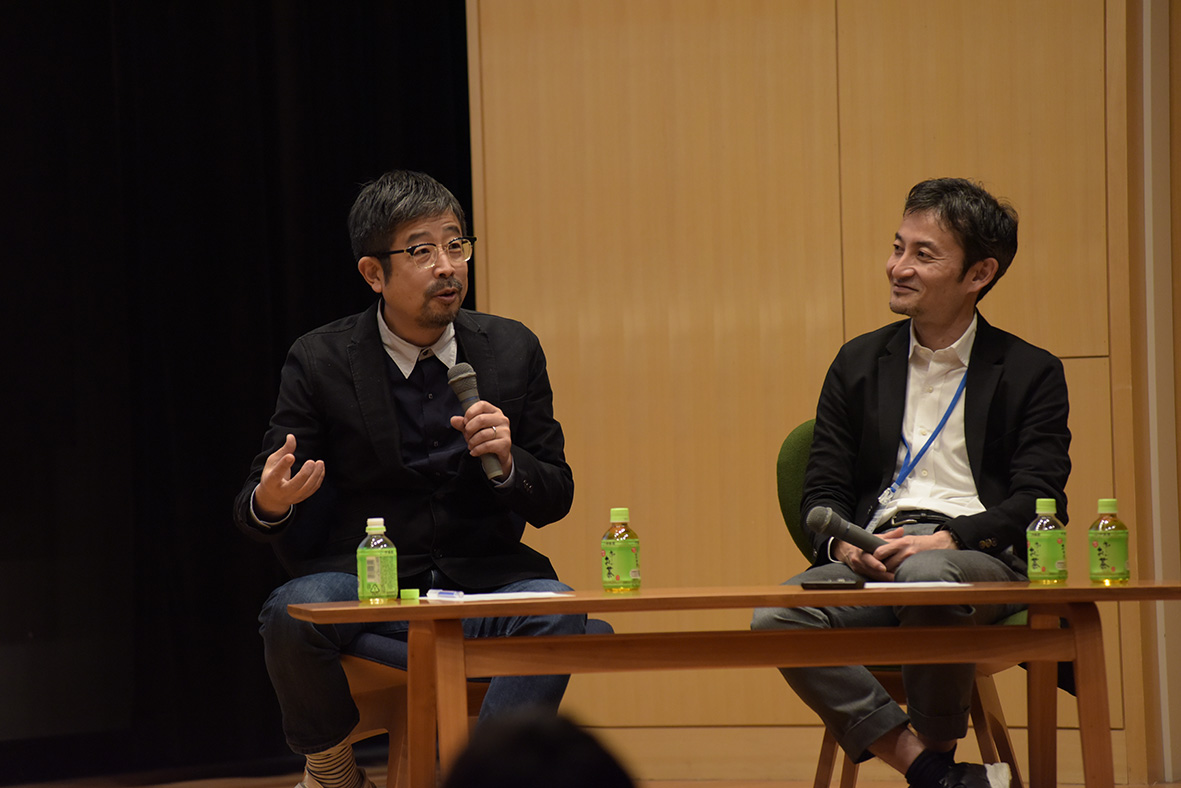Ueno Park Studies, Lecture 02
December 21 st, 2017
Shaping the Regional Landscape through Everyday Life
A How-to of “Total Landscape”
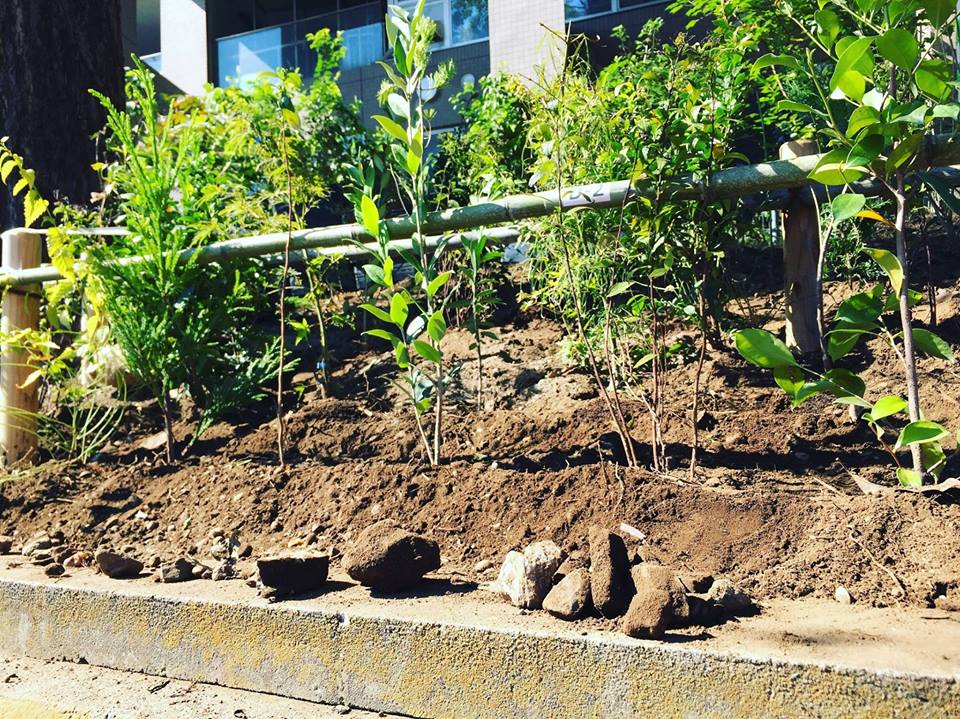
Geidai Hedge
Writer|Sayuri Kobayashi/Editor|Yoko Kawamura
Translation supervition and editing|Suzanne Mooney English translation|Ekaterina Dombinskaya
Ueno Park
Behind the current appearance of Ueno Park is a history of careful planning and planting over different periods of time. Michio Tase is a landscape architect who played an important role in shaping Ueno Park into what we see today, and who approached its landscape design with an attitude of “finding treasures” and, thereby, utilizing existing flora and water sources that the land had to offer, masterfully incorporated them into a newly created landscape. In this lecture he invites us on a journey to explore Ueno’s visual elements through his perspective.
Michio Tase is an architect of high renown who represents Japan in the area of landscape design. His graduation project at the University of Chiba, Faculty of Horticulture, was dedicated to a detailed survey of the uniform trimming found at Tokyo Bunka Kaikan premises (TN: name of a concert hall). Following his graduation from the University of Chiba in 1973, the starting point of Tase’s career was participation in construction works on a section of Ueno Park – part of a larger construction project ongoing around Ueno Station, Keisei train line. Tase recalls, “…it was decided to increase the size and capacity of the underground station in order to add a new express train line to the transportation network – a Keisei Skyliner. To enable the construction works required for the station’s expansion, the trees above the station had to be dug up and temporarily replanted at a designated field in Chiba Prefecture, to be returned once the station was completed. We spent three and a half years carefully preparing the Ueno greenery restoration plan and conducting the necessary works and operations. One of the issues was that due to the expansion of the underground station a lot of ground water was welling up and had to be displaced, so we designed a system that would divert a large portion of that water to fill the Shinobazu Pond. The long corridor of cherry blossom trees that starts from the small police station beneath the statue of Saigo Takamori had to be mostly replaced with new cherry blossom trees. Ueno originally had the soil typical for the Musashino Plateau, which means it was rich with red Kanto loam, so we mixed the red clay into the artificial soil for it to resemble the original properties of the local soil. The trees and shrubs that we planted in this artificial soil look great to this day.”
Tase, who has had a long relationship with the Ueno area, is currently active in multiple greenery design projects at Tokyo University of the Arts (further abbreviated as Geidai ). One of the projects he supervises is a forestry preservation and reconstruction program known as “The Narrow Road to the Interior” (TN: originally the title of a work of Japanese literature haiku by the poet Matsuo Bashō). The area targeted by this project is located inside the campus of the Faculty of Fine Arts. There, the scarce remnants of virgin forest that was once abundant on the Musashino Plateau, but since lost its diversity due to aggressive imported plants, are being carefully managed with the aim of restoring the natural flora of the campus. From the start of the project in 2014, it took approximately three years to reach completion, and over 100 different kinds of saplings were planted. The major work was conducted by students, staff and alumni. Additionally, in 2016 and 2017 Tase worked on a project called Geidai Hedge, which focused on the outward-facing peripheral growth around the campus grounds. Shrubs and vegetation that were not native or suitable for original Ueno area flora were removed or trimmed, soil was improved by adding native geological components, ridges were formed, and a large number of native saplings planted. As Tase points out, “Among the multiple advantages of mixed planting, the main two are probably that you can enjoy the change of color and visualize the arrival of each season – an aesthetic value, but also in the case of an outbreak of disease that hits one type of plant, it will likely stay confined to one species and not spread to other plants – a practical value. Ueno Park has plenty of tall and healthy trees, but if you look at the ground, in most places there is no grass, only bare ground. The reason for that is disorder in the circulation of nutrients, which leads to an almost infertile top layer of the soil, which in turn means only a very limited amount of vegetation can survive in such conditions. I have hope that the effort started by us to restore flora diversity in Ueno will breach the walls of the campus and spread further afield, and some day we will see healthy foliage and juicy grasses everywhere on the hills of Ueno.”
A representative work by Tase, a complex of facilities known as ACROS Fukuoka, features a green outdoor cascade of terraces, and utilizes the principle of mixed planting, using the plants native to local hills and mountains around the city of Fukuoka. The complex was designed to stand as a mountain in the city centre. Tase notes, “Even though Fukuoka is well known for its regular summer droughts, this island of greenery can survive without additional watering because it was one of the fundamental rules of our approach to its design. In 1995 we planted around 80 different kinds of shrubs and trees there, but the variety naturally increased with the contribution of local, naturally occurring undergrowth, and probably the influence of the birds that carried over different kinds of seeds from other places. Now there are probably over 200 different varieties of plants represented on that terrace.”
Tase, who dedicated a large part of his life to making cities greener, is recently involved in a project in Tokushima Prefecture, in Kamiyama town, located in the mountains along the basin of the Akui River. The content of the project is using locally sourced wood to build a wooden apartment complex. This project, among other things, tackles the problem of overall depopulation and rapid decrease of the child population in the area. “In 1979 a prominent landscaping scholar Kazuo Saito proposed the concept of “Total Landscape”. His notion was that the central pieces of the Japanese landscapes are topography and greenery (vegetation), created by the bodies of water running through them or accumulating in them. A river always represents one continuous landscape, where everything is connected from the source close to the mountaintop, to the point where it ends by entering the ocean. However, due to the impact of political and economic frameworks set in place particularly in postwar Japan, the culture of everyday life and the economy of cities and towns became disconnected from the local topography. This issue is not exclusive to Kamiyama. It is our duty to restore that severed connection and reconstruct the natural relationship between people and land they live on.”
If you look at town-planning blueprints of ancient Kyoto, you can see the clear division into blocks, and inside of each block you will see homes of various sizes, and a yarimizu stream (TN: A narrow stream flowing through a traditional Japanese garden, created through elaborate manipulation of water flows and rock placement in the water) running through them. “Most of the land [these days] is divided into tiny bits and pieces between many landowners, so you simply can not construct a new body of water that would go beyond your property boundaries. With vegetation, if you start planting the same kinds of grasses or trees as the ones that can be found in local, wild nature, eventually the area you plant will exhibit the same colors and shapes as other parts of the region and will visually merge with the local environment. And following the flora merge, creatures like birds and butterflies will also cross the boundary between the wild and the private property, and an exciting tale will be born,” ponders Tase.
Tase states that in modern-day Tokyo, real estate developers care only about the comfort of their residents, and they shape the market values accordingly. They divide the already smaller properties into even smaller plots in order to meet the current market demands. His concern is that we are heading full speed towards a self-centered and egoistic society whereby a neighbor tells you, “I do not want a single leaf from your tree to fall on my property.” He declares, “I call this selfishly developed aggregation of property clusters the ‘Tokyo Construction Desert’, a sad sight. Tokyo is in desperate need of repair to its urban ecology.” The effort of humans to utilize the existing resources that nature has to offer, such as water and land, is in itself the process of creation of regional landscapes. If we strive to involve more people to participate in such projects as Geidai Hedge, we will create an environment in which we can build landscapes that are essential, natural, and likely to be sustainable for a long time.
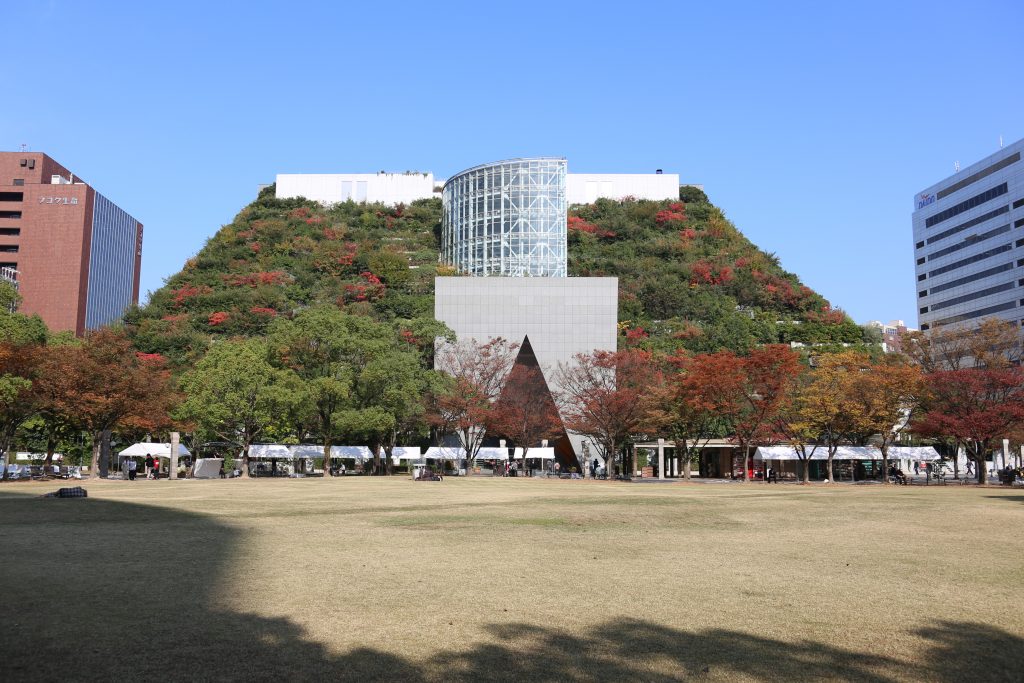 ACROSS Fukuoka(PLAMTAGO/2017)
ACROSS Fukuoka(PLAMTAGO/2017)
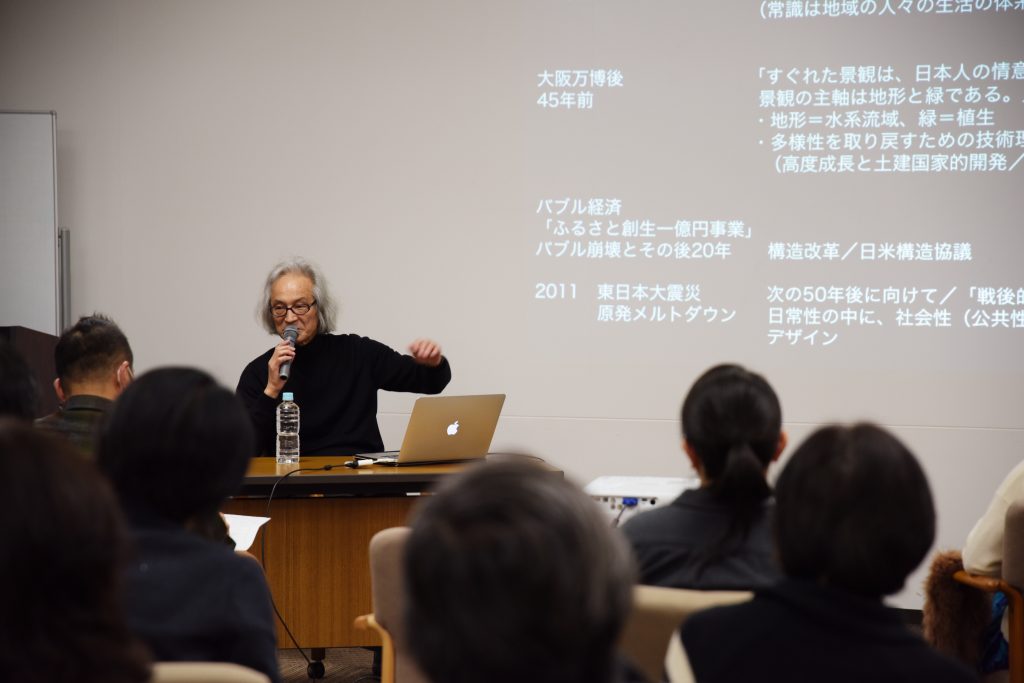 Photo by Akihide Saito
Photo by Akihide Saito
Michio Tase
Landscape architect
Born in 1949 in Tokyo, Tase graduated from the University of Chiba / Faculty of Horticulture / Landscape Architecture Course. In 1973 he joined Fujiueki Co., Ltd. – a landscaping company. In 1977, he established the Plamtago workshop. From 1978 to 1986 he was actively involved in the development of apartment complexes at SUM Design Co., Ltd. In 1990 he became the CEO of Plamtago Co., Ltd., and in 2008 he assumed the concurrent position of CEO at an agricultural entity North Co., Ltd.. His major works include Yurigaoka Village, Court House Kunitachi, ACROS Fukuoka, Fukushima Aquarium, BIOS in Okinawa, solar energy company OM-EGG, Nissan Advanced Technology Center, 5bai Midori, Ajinomoto Stadium West Field, Renovated ‘Machiya’ modern folk dwellings, Queen’s Meadow Country House and a horse farm in Tono City (capacity for up to 100 horses), among other projects.

